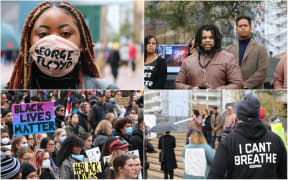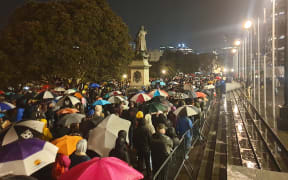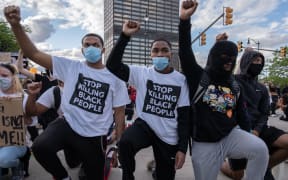Violence has erupted in cities across the US on the sixth night of protests sparked by the death in police custody of African-American George Floyd.
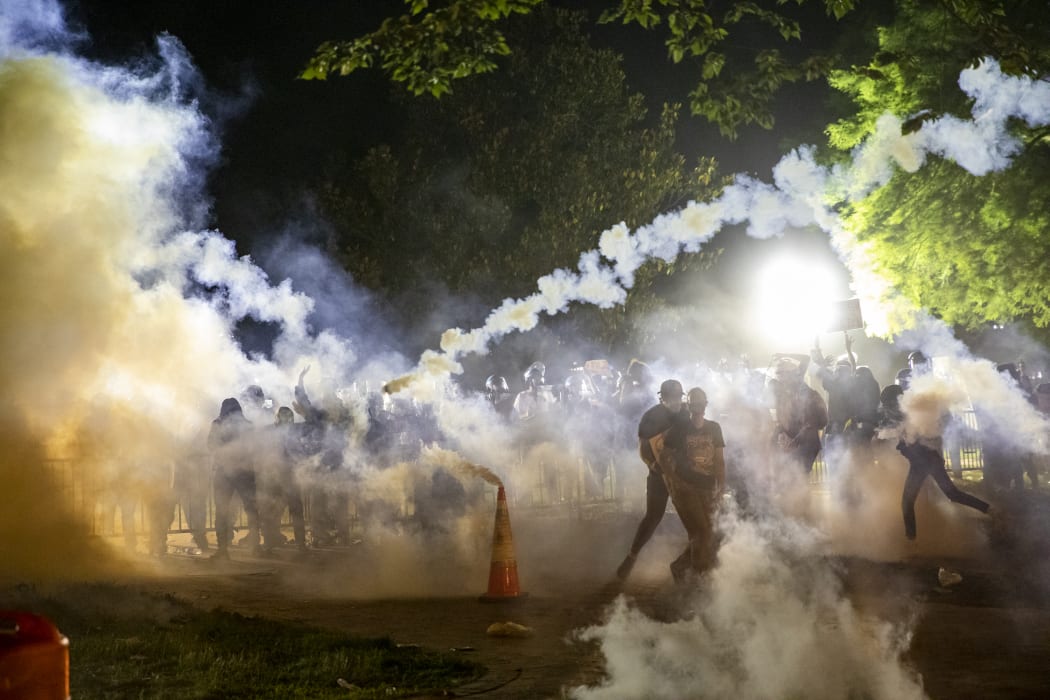
Tear gas rises as protesters face off with police during a demonstration outside the White House on 31 May over the death of George Floyd at the hands of Minneapolis Police. Photo: AFP
Dozens of cities imposed curfews, but many people ignored them, leading to stand-offs and clashes.
Riot police faced off with protesters in New York, Chicago, Philadelphia and LA, firing tear gas and pepper bullets to try to disperse crowds.
Police vehicles were set on fire and shops were looted in several cities.
The country is experiencing the most widespread racial turbulence and civil unrest since the backlash to the assassination of Martin Luther King in 1968.
The outpouring of anger began last Tuesday, after a video showed George Floyd being arrested in Minneapolis and a white police officer continuing to kneel on his neck even after he pleaded he could not breathe and fell unconscious.
The National Guard - the US reserve military force for domestic emergencies - said on Sunday that 5000 of its personnel had been activated in 15 states and Washington, DC, where crowds once again gathered near the White House.
Demonstrators lit fire to buildings there, including a historic church known as the church of the presidents, and threw stones at riot officers. Police used tear gas in response.
In Louisville, Kentucky, a man was shot dead in a confrontation between protesters, police and the National Guard after midnight early on Monday. Shots were fired at police officers and guard troops as they moved to disperse a crowd in a car park and "returned fire", leaving one man dead, Louisville Metro Police said.
Trump tells governors to get tougher on protesters
President Donald Trump told US governors in a call on Monday their response to nationwide protests made them look weak and they should take a tougher stance, according to media reports.
"You have to dominate, if you don't dominate you're wasting your time. They're going to run over you, you're going to look like a bunch of jerks. You have to dominate," Trump said, according to CBS News, which cited audio it had obtained.
"You've got to arrest people, you have to track people, you have to put them in jail for 10 years and you'll never see this stuff again," he said, according to the audio.
Trump threatened to get tough himself and "activate" US Attorney General Bill Barr, CBS said. He urged governors to seek retribution, make sweeping arrests and pass laws against burning flags, CBS and the New York Times reported.
George Floyd's brother visits memorial site
Terrence Floyd has visited the site in Minneapolis where his brother George was arrested and killed a week ago, and where a prayer vigil was being held.
He told protesters that his brother would have wanted demonstrations to be held peacefully, and that riots would not bring him back.
Protesters should instead "educate yourself, and know who you're voting for. That's how we're going to hit them," Terrence said. "Let's switch it up."
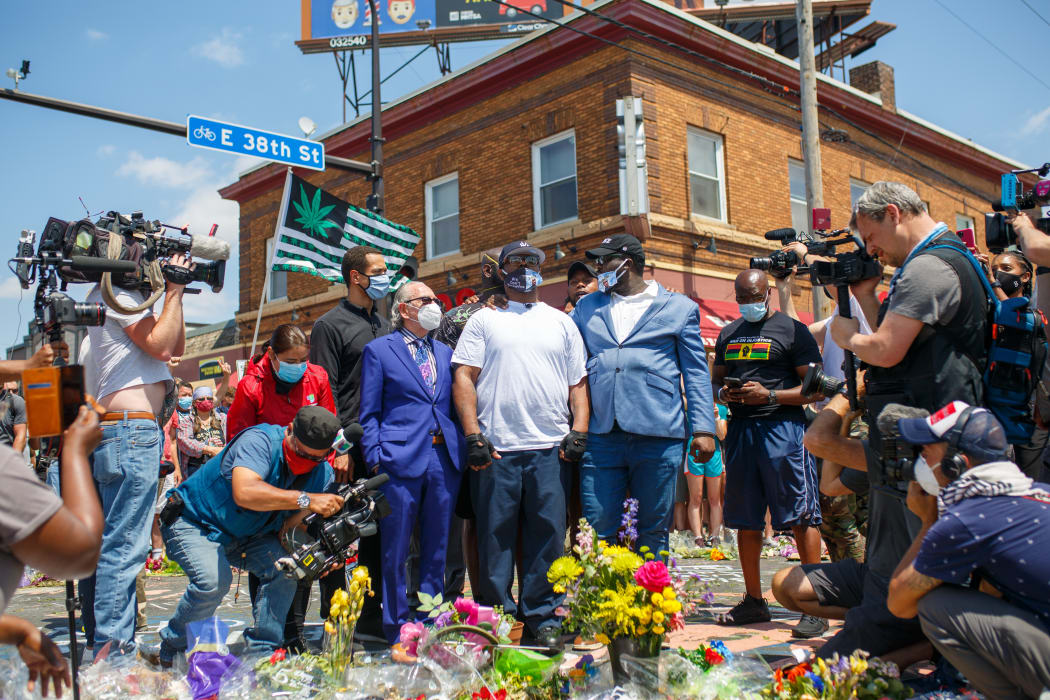
Terrence Floyd said his brother was about peace. Photo: AFP
"I just had to come down here to speak to people, and let people know, just channel your anger elsewhere. Don't tear up your town."
Independent autopsy finds asphyxia was cause of death
An independent post mortem ordered by Floyd's family suggests that he died of "mechanical asphyxia". Two doctors said the compression on Floyd's neck and back prevented the bloodflow to his brain and airflow to his lungs.
The second medical examiner, Dr Michael Baden said the autopsy showed "no underlying medical problem that caused or contributed to his death".
That contradicts the preliminary offical report which suggested a number of factors, including Floyd's underlying heart conditions and potential intoxicants had played a role in his death.
More than 75 cities have seen protests, with streets only days ago deserted because of coronavirus full of demonstrators marching shoulder to shoulder. Some US officials have warned of protest-connected virus outbreaks.
The Floyd case has reignited deep-seated anger over police killings of black Americans and racism. It follows the high-profile cases of Michael Brown in Ferguson, Eric Garner in New York and others that have driven the Black Lives Matter movement.
For many, the outrage also reflects years of frustration over socio-economic inequality and discrimination, not least in Minneapolis itself, where George Floyd died.
What's the latest on the protests?
Despite strict curfews and the deployment of the National Guard, many demonstrations that had been peaceful during the day again descended into violence overnight.
Police vehicles were vandalised and set alight in several cities, while riot officers continued to respond with tear gas and flash grenades.
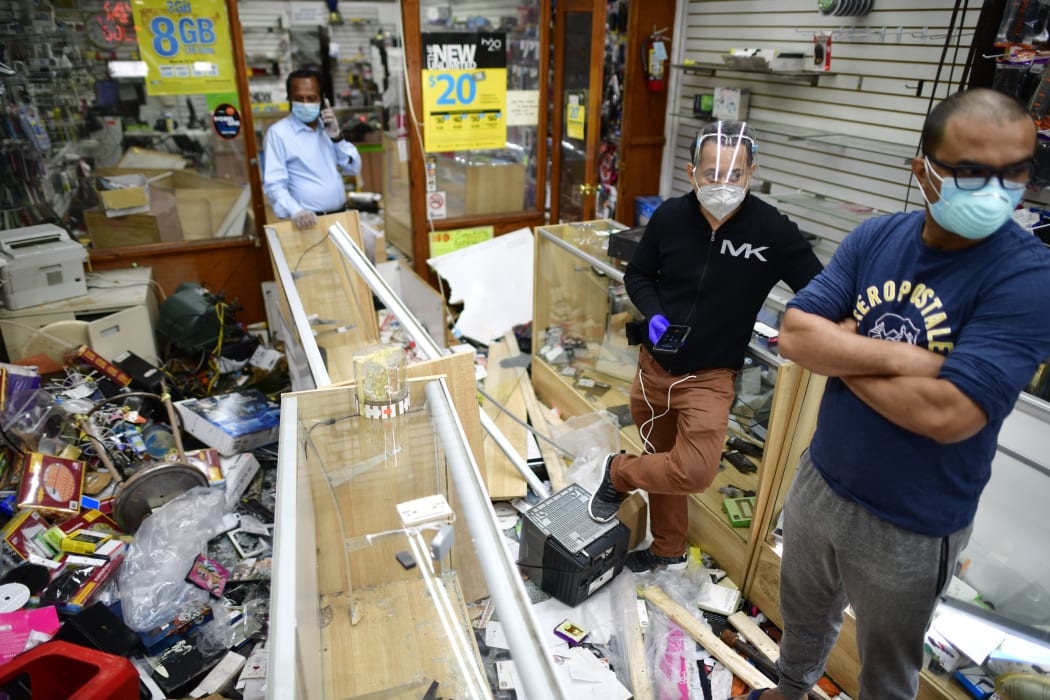
Shop owners in Philadelphia survey the damage to their store on 1 June in the aftermath of widespread unrest. Photo: AFP / Getty Images
In Philadelphia, local TV stations showed people smashing police cars and looting at least one store.
Trump tweeted: "Law & Order in Philadelphia, NOW! They are looting stores. Call in our great National Guard."
At least 4400 people have been arrested in several days of protests, according to the Associated Press news agency, for offences including blocking motorways, looting and breaking curfew.
In Minneapolis, a lorry driver was arrested after reportedly breaching a road barrier before speeding towards a crowd of protesters marching along a major motorway. He has now been charged with assault, CNN reports.
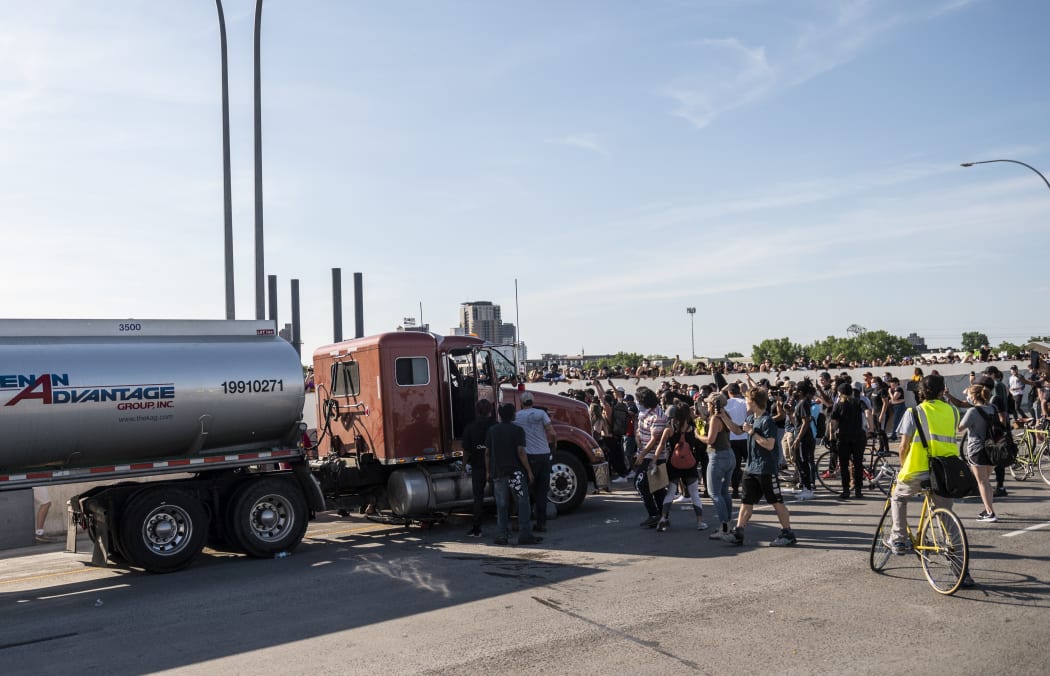
The driver of a truck that sped towards a crowd of protesters in Minneapolis has been charged with assault. Photo: AFP
Footage posted on social media showed dozens of people surrounding the vehicle and pulling the driver out from behind the wheel after it came to a stop.
The driver was taken to hospital with minor injuries and later to the county jail. There were no immediate reports of other casualties.
Minnesota's Governor Tim Walz said the motive of the driver was unclear, adding: "To not have tragedy and many deaths is simply an amazing thing."
Many videos shared on social media appeared to show riot police responding disproportionately to demonstrators. In Atlanta, Georgia, two officers were sacked on Sunday for using excessive force - including using a taser on two young college students.
Dozens of journalists have also spoken out about being targeted by police despite making clear they are with the media. A BBC cameraman was charged at by a shield-carrying officer near the White House.
There have also been protests in European cities, including London, Berlin, Zurich and Brussels.
What happened to George Floyd?
On the evening of 25 May, police were called to a grocery store where George Floyd had allegedly paid for cigarettes with a counterfeit $20 note. They found him in his car outside and tried to put him in a police vehicle, but Floyd dropped to the ground, telling officers he was claustrophobic.
According to police, he physically resisted and was handcuffed. Video of the incident does not clearly show what happened at that point.
Bystander footage shows three police officers kneeling on the unarmed Floyd, with officer Derek Chauvin's knee on his neck. Floyd can be heard saying "please, I can't breathe" several times and "don't kill me" but Chauvin does not remove his knee despite pleas from bystanders.
According to a preliminary autopsy, the police officer had his knee on Floyd's neck for eight minutes and 46 seconds - almost three minutes of which was after Floyd became non-responsive.
Nearly two minutes before Chauvin removed his knee the other officers checked Floyd's right wrist for a pulse and were unable to find one. He was taken to hospital and pronounced dead around an hour later.
Chauvin, 44, has been charged with murder.
- BBC / Reuters
